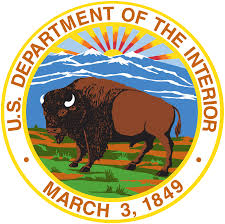
USDA
WASHINGTON, June 25, 2020 – (Thursday), the U.S. Department of the Interior (DOI) forged a new partnership with the U.S. Department of Agriculture (USDA) by signing the National Programmatic Agreement among the U.S. Department of Agriculture Rural Development Programs, National Conference of State Historic Preservation Officers and the Advisory Council on Historic Preservation for Sequencing Section 106 (USDA-RD NPA).
“Under the leadership of President Trump and Agriculture Secretary Perdue, USDA is committed to being a strong partner to rural communities in building stronger and more prosperous futures, because we know that when rural America thrives, all of America thrives,” said Deputy Under Secretary for USDA Rural Development Bette Brand. “This agreement will create a more seamless experience for rural leaders seeking to access USDA programs essential for rural infrastructure build-out.”
“Having the Bureau of Indian Affairs as part of the USDA’s National Programmatic Agreement will greatly enhance the tribes’ ability to finance their Section 106 compliance for the USDA’s Rural Development infrastructure investments that cross their lands,” said Assistant Secretary of Indian Affairs Tara Sweeney. “The NPA supports and encourages the consideration of impacts to historic property and cultural resources early in project planning, protects the tribal consultation process, and benefits tribal applicants eligible for USDA Rural Development programs.”
The USDA-RD NPA (PDF, 685 KB) is used by USDA Rural Development to comply with Section 106 of the National Historic Preservation Act (NHPA) when investing in water, power, waste treatment and telecommunications projects on federally managed lands, including federal Indian reservations. Tribal communities greatly benefit from such development, and DOI is proud to partner with USDA Rural Development on helping them meet their Section 106 compliance requirements. In addition to Section 106 requirements, all USDA Rural Development applicants must undergo an environmental review process before construction can begin.
The NPA also follows President Trump’s Executive Order 13821 “Streamlining and Expediting Requests to Locate Broadband Facilities in Rural America” dated January 8, 2018. Adhering to the NPA also furthers Secretary of the Interior David Bernhardt’s priorities of informing land-use planning processes especially for public use and access; reducing administrative and regulatory burdens; supporting tribal self-determination, self-governance and sovereignty; and fostering partnerships to achieve a balanced stewardship and use of the nation’s public lands.
The NPA provides a way for USDA Rural Development to invest in infrastructure development projects in rural communities by allowing USDA Rural Development to obligate funds for a federal undertaking prior to completing the Section 106 process for projects on federally owned and controlled lands. An undertaking is a project, activity, or program funded, permitted, licensed or approved by a federal agency that can take one to five or more years to complete.
With the NPA, rural applicants, including tribes, who have difficulty obtaining resources to undertake and complete the Section 106 review process, including the analysis of project alternatives, can be confident that USDA Rural Development low-interest loans and grants will be available to assist them with Section 106 compliance, creating more project certainty for proponents.
Section 106 requires federal agencies to take into account the effects of their undertakings on historic properties and cultural resources and to provide the Advisory Council on Historic Preservation (ACHP) with a reasonable opportunity to comment. Federal agencies are also required to consult using Section 106’s four-step process with State Historic Preservation Offices (SHPOs), Tribal Historic Preservation Offices (THPOs), Indian Tribes (including Alaska Natives), and Native Hawaiian Organizations (NHOs).
The USDA-RD NPA applies only to USDA Rural Development compliance with Section 106 and does not fulfill compliance with other federal historic preservation laws such as the Archeological Resources Protection Act and the Native American Graves Protection and Repatriation Act.
In April 2017, President Donald J. Trump established the Interagency Task Force on Agriculture and Rural Prosperity to identify legislative, regulatory and policy changes that could promote agriculture and prosperity in rural communities. In January 2018, Secretary Perdue presented the Task Force’s findings to President Trump. These findings included 31 recommendations to align the federal government with state, local and tribal governments to take advantage of opportunities that exist in rural America. Increasing investments in rural infrastructure is a key recommendation of the task force. To view the report in its entirety, please view the Report to the President of the United States from the Task Force on Agriculture and Rural Prosperity (PDF, 5.4 MB).
USDA Rural Development provides loans and grants to help expand economic opportunities and create jobs in rural areas. This assistance supports infrastructure improvements; business development; housing; community facilities such as schools, public safety and health care; and high-speed internet access in rural areas. For more information, visit www.rd.usda.gov.